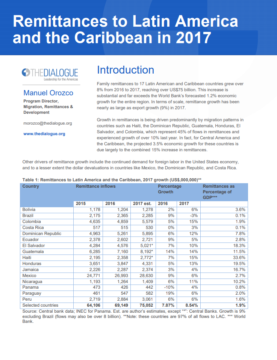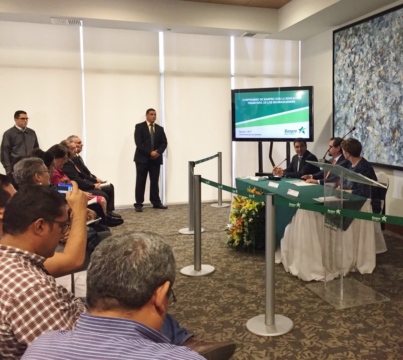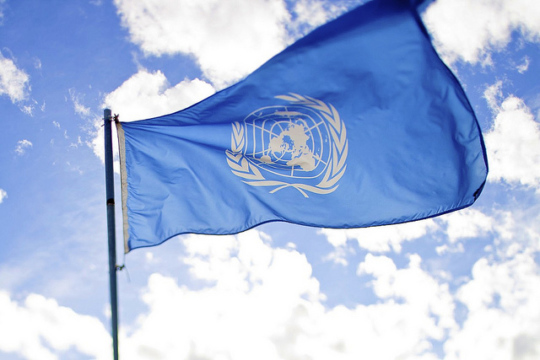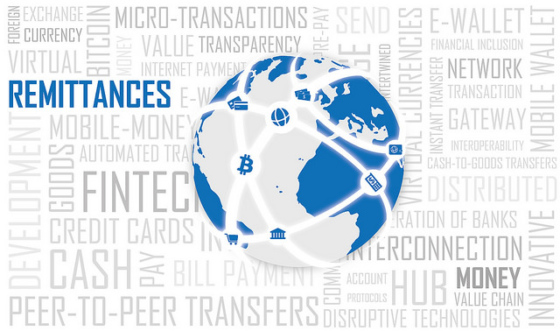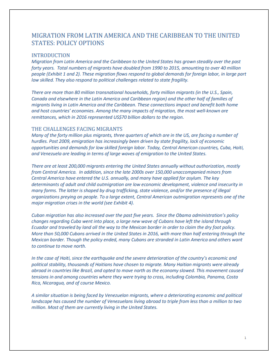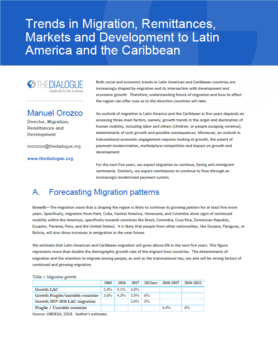
Trends in Migration, Remittances, Markets and Development to Latin America and the Caribbean
Understanding the future of migration and how it affects the region can offer cues as to the direction countries will take.
Understanding the future of migration and how it affects the region can offer cues as to the direction countries will take.
The September 2019 Newsletter of the Remittance Industry Observatory looks at Nigeria, a country with a complex history of migration and some of the largest remittance flows in Africa and presents a summary of a recent Congressional Hearing on Facebook’s proposed mobile wallet, Calibra.
On April 4, the Inter-American Dialogue hosted its yearly event on remittances to Latin America and the Caribbean, “Remittances to Latin America and the Caribbean in 2018.” The event brought together a panel of experts for a discussion of 2018 remittance flows, the outlook for 2019, and issues influencing the marketplace.
Each year, the Inter-American Dialogue analyzes remittances to the region, identifying areas of growth and new trends that are impacting how people send and receive money. Family remittances to Latin America and the Caribbean reached $85 billion in 2018, an important financial flow and a critical source of support for many households in the region.
Family remittances to Latin America and the Caribbean experienced nearly 10% growth in 2018, one of the largest growth rates in the past 10 years. Growth in remittances stands in stark contrast to the sluggish 1.9% economic growth rate for the region. The countries with the highest remittance growth rates in 2018 included Haiti, Colombia, Brazil, Guatemala and Paraguay.
Con los cambios de la política migratoria de Estados Unidos, se cuestiona el impacto que la finalización del Estatus de Protección Temporal tendrá sobre los países que envían remesas a sus países de origen. Manuel Orozco comenta para CNN sobre el impacto en Honduras, Nicaragua y El Salvador.
On January 25, 2018 the Inter-American Dialogue’s Migration, Remittances & Development Program hosted “Remittances to Latin America and the Caribbean in 2017,” an annual event presenting remittance flows to the region.
Remittances to Latin America and the Caribbean grew over 8% in 2017, according to new research by the Inter-American Dialogue.
Orozco, citando estudios del Diálogo Interamericano, sostiene que unos 146.500 salvadoreños con TPS envían dinero a El Salvador, lo que suma anualmente unos $630 millones. En el peor de los escenarios, “un retorno de todos los salvadoreños implicaría que El Salvador no tendrá crecimiento económico”.
Este memo presenta los resultados del proyecto piloto sobre la inclusión financiera en Nicaragua en alianza con CAMINNA y Banpro/Grupo Promerica.
En alianza con Banpro y la Alianza para las Migraciones en Centroamérica y México, nuestro programa de inclusión financiera generó US$960,000 en ahorros.
Migrants’ economic contributions can be successfully leveraged for development if policies consider them in relation to drivers of migration and development challenges.
Enabling tools that motivate remittance recipients to access and use a variety of financial services needed to increase assets is key to wealth generation.
Addressing the unique financial needs of migrants will optimize the potential of their contributions and those of future generations.
Migration from Latin America and the Caribbean to the United States has grown steadily over the past forty years. In addition to leaving their countries amidst political and economic hardship, the vast majority of these migrants face additional challenges to their legal status. One way to look for solutions is to consider a comprehensive approach to migration through recruitment, retention, return, relief and reform.
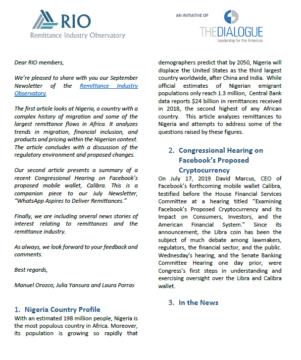
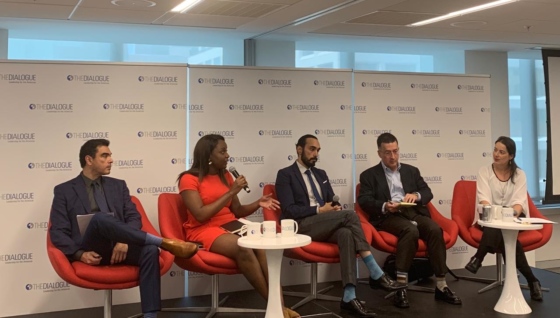 Video
Video


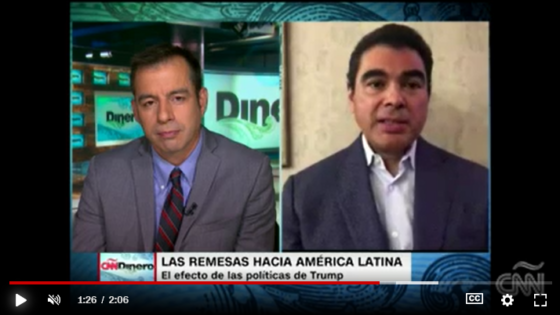 Video
Video
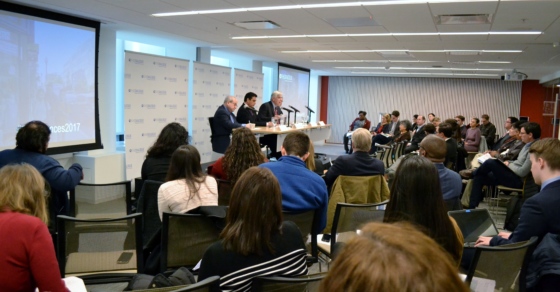 Video
Video
